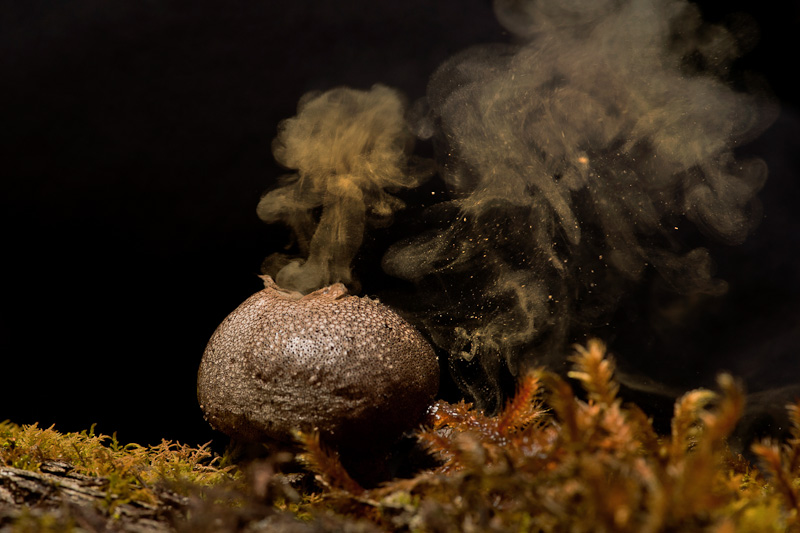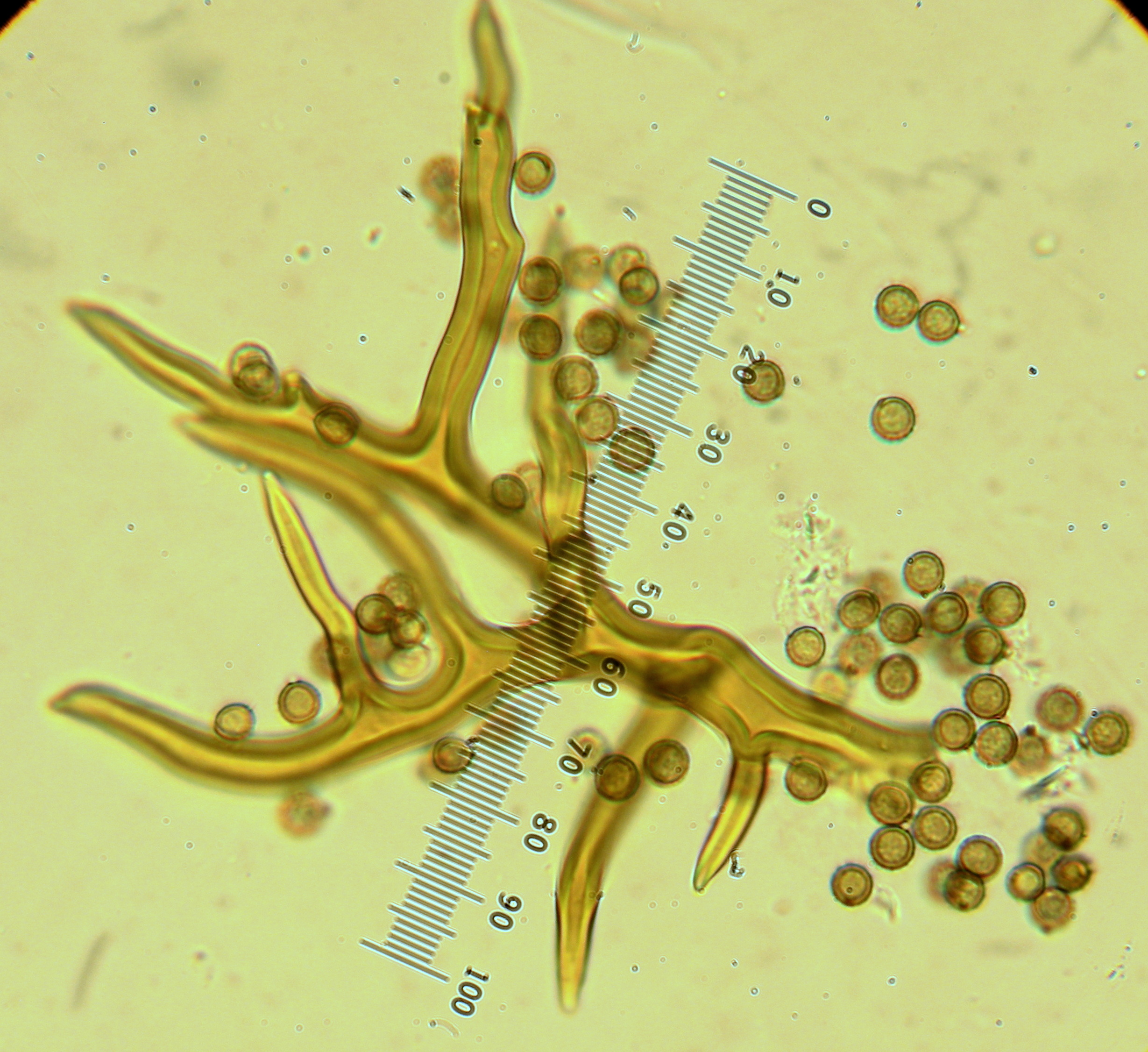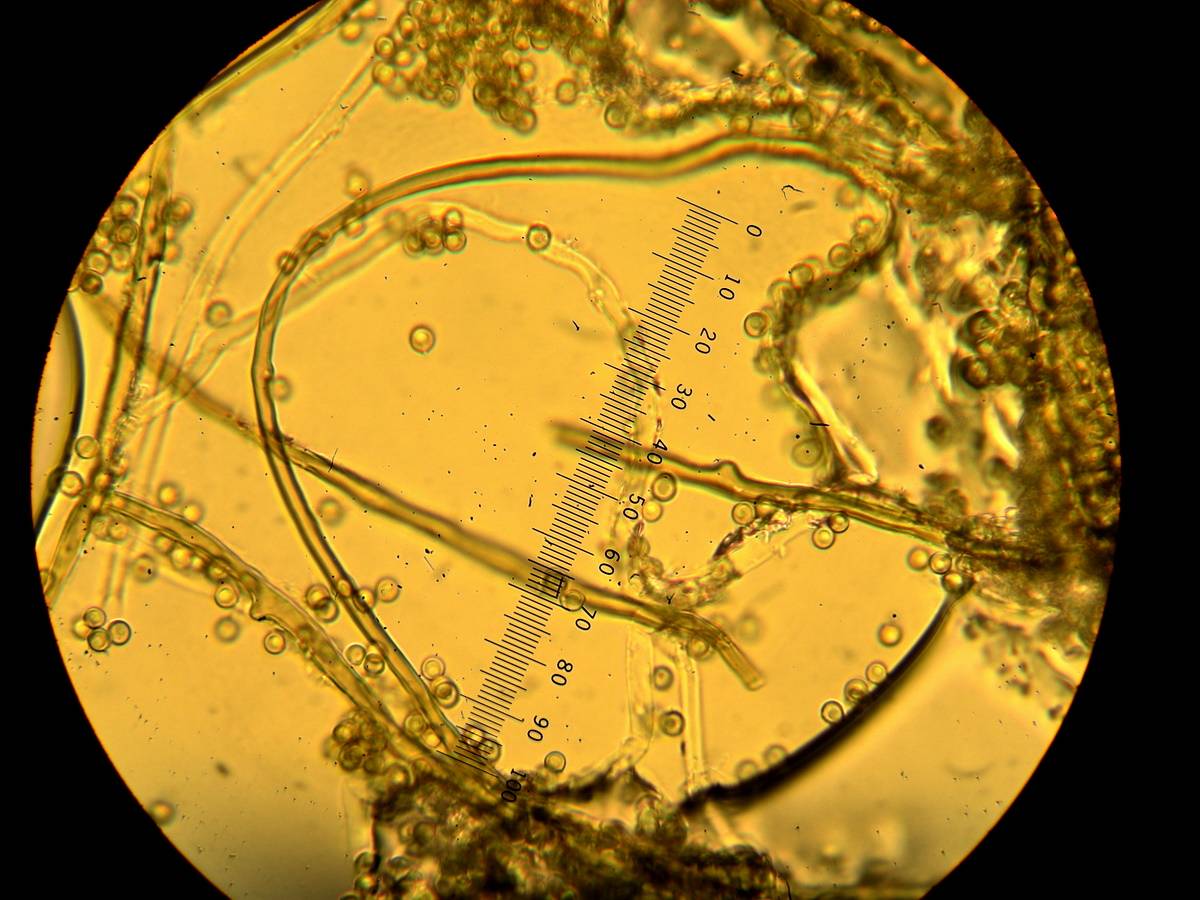|
Bovista
''Bovista'' is a genus of fungi commonly known as the true puffballs. It was formerly classified within the now-obsolete order Lycoperdales, which, following a restructuring of fungal taxonomy brought about by molecular phylogeny, has been split; the species of ''Bovista'' are now placed in the family Agaricaceae of the order Agaricales. ''Bovista'' species have a collectively widespread distribution, and are found largely in temperate regions of the world. Various species have historically been used in homeopathic preparations. Description Fruit bodies are oval to spherical to pear-shaped, and typically in diameter with a white or light-colored thin and fragile exoperidium (outer layer of the peridium). Depending on the species, the exoperidium in a young specimen may be smooth, granular, or finely echinulate. This exoperidium sloughs off at maturity to expose a smooth endoperidium with a single apical pore (ostiole). The fruit bodies may be attached to the ground by fine rhiz ... [...More Info...] [...Related Items...] OR: [Wikipedia] [Google] [Baidu] |
Bovista Plumbea
''Bovista plumbea'', commonly known as the tumbling puffball, tumbleball, or paltry puffball,Bovista plumbea is a small puffball mushroom commonly found in Europe, Western Europe and California,Species: Bovista plumbea Pers. 1795 white when young and greyish in age. Easily confused with immature ''Bovista dermoxantha'', it is attached to the substrate by a tuft of mycelium. Description The fruiting body of the Sporocarp (fungi), sporocarp is 1.5–3.5 cm broad, attached to the substrate by a tuft of mycelium, and spherical to slightly compressed. The exoperidium is white, ...[...More Info...] [...Related Items...] OR: [Wikipedia] [Google] [Baidu] |
Puffball
Puffballs are a type of fungus featuring a ball-shaped fruit body that (when mature) bursts on contact or impact, releasing a cloud of dust-like spores into the surrounding area. Puffballs belong to the division Basidiomycota and encompass several genera, including ''Calvatia'', ''Calbovista'' and ''Lycoperdon''. The puffballs were previously treated as a taxonomic group called the Gasteromycetes or Gasteromycetidae, but they are now known to be a polyphyletic assemblage. The distinguishing feature of all puffballs is that they do not have an open cap with spore-bearing lamella (mycology), gills. Instead, spores are produced internally, in a spheroidal fruit body called a ''gasterothecium'' (gasteroid 'stomach-like' basidiocarp). As the spores mature, they form a mass called a gleba in the centre of the fruitbody that is often of a distinctive color and texture. The basidiocarp remains closed until after the spores have been released from the basidia. Eventually, it develops an a ... [...More Info...] [...Related Items...] OR: [Wikipedia] [Google] [Baidu] |
Calbovista
''Calbovista'' is a fungal genus containing the single species ''Calbovista subsculpta'', commonly known as the sculptured puffball, sculptured giant puffball, and warted giant puffball. It is a common puffball of the Rocky Mountains and Pacific Coast ranges of western North America. The puffball is more or less round with a diameter of up to , white becoming brownish in age, and covered with shallow pyramid-shaped plates or scales. It fruits singly or in groups along roads and in open woods at high elevations, from summer to autumn. Although the puffball was originally described as new to science by Elizabeth Eaton Morse in 1935, it was not published validly until 60 years later. The species is named for its resemblance to '' Calvatia sculpta'', from which it can be usually distinguished in the field by its less prominent pyramidal warts, and microscopically by the antler-like branches of its capillitium (thread-like material among the spores). ''Calbovista subsculpta'' is ... [...More Info...] [...Related Items...] OR: [Wikipedia] [Google] [Baidu] |
Lycoperdales
The Lycoperdales are a now outdated order of fungi. The order included some well-known types such as the giant puffball, the earthstars, and other tuberous fungi. They were defined as having epigeous basidiomes, a hymenium present, one to three layers in the peridium (outer wall), powdery gleba, and brown spores. The restructuring of fungal taxonomy brought about by molecular phylogeny has divided this order. Most of its members have been placed in family Agaricaceae of order Agaricales, while the earthstars are now in Geastrales, and similar species now occupy the order Phallales. Lycoperdales were distinguished by their globose or subglobose fruiting body having a gleba that is powdery at maturity, and generally supported by sterile tissue. Example genera include Lycoperdon ''Lycoperdon'' is a genus of puffball mushrooms. The genus has a widespread distribution and contains about 50 species. In general, it contains the smaller species such as the pear-shaped puffball and ... [...More Info...] [...Related Items...] OR: [Wikipedia] [Google] [Baidu] |
Tumbleweed
A tumbleweed is a structural part of the above-ground anatomy of a number of species of plants. It is a diaspore that, once mature and dry, detaches from its root or stem and rolls due to the force of the wind. In most such species, the tumbleweed is in effect the entire plant apart from the root system, but in other plants, a hollow fruit or inflorescence might detach instead. Xerophyte tumbleweed species occur most commonly in steppe and arid ecosystems, where frequent wind and the open environment permit rolling without prohibitive obstruction. Apart from its primary vascular system and roots, the tissues of the tumbleweed structure are dead; their death is functional because it is necessary for the structure to degrade gradually and fall apart so that its seeds or spores can escape during the tumbling, or germinate after the tumbleweed has come to rest in a moist location. In the latter case, many species of tumbleweed open mechanically, releasing their seeds as they swel ... [...More Info...] [...Related Items...] OR: [Wikipedia] [Google] [Baidu] |
Agaricaceae
The Agaricaceae are a family of basidiomycete fungi and include the genus ''Agaricus'', as well as basidiomycetes previously classified in the families Tulostomataceae, Lepiotaceae, and Lycoperdaceae. Taxonomy The family Agaricaceae was published by French botanist François Fulgis Chevallier in 1826. It is named after the type genus ''Agaricus'', originally circumscribed by Carl Linnaeus in his 1753 work ''Species Plantarum''. In his authoritative 1986 classification of the Agaricales, Rolf Singer divided the Agaricaceae into four tribes distinguished largely by spore color: ''Leucocoprineae'', ''Agariceae'', ''Lepioteae'', and ''Cystodermateae''. Genera once classified in the families Tulostomataceae, Battarreaceae, Lycoperdaceae, and Mycenastraceae have since been moved to the Agaricaceae based on molecular phylogenetics studies. According to a standard reference text, the Agaricaceae contains 85 genera and 1340 species. Description Agaricaceae species use a wide variety of ... [...More Info...] [...Related Items...] OR: [Wikipedia] [Google] [Baidu] |
Lycoperdon
''Lycoperdon'' is a genus of puffball mushrooms. The genus has a widespread distribution and contains about 50 species. In general, it contains the smaller species such as the pear-shaped puffball and the gem-studded puffball. It was formerly classified within the now-obsolete order Lycoperdales, as the type genus which, following a restructuring of fungal taxonomy brought about by molecular phylogeny, has been split. ''Lycoperdon'' is now placed in the family Agaricaceae of the order Agaricales. The scientific name has been created with Greek words (''lycos'' meaning ''wolf'' and ''perdomai'' meaning ''to fart'') and based on several European dialects in which the mushroom name sounds like ''wolf-farts''. Most species are edible, ranging from mild to tasting distinctly of shrimp. Species * '' Lycoperdon caudatum'' (Syn. ''Lycoperdon pedicellatum'') J.Schröt. * '' Lycoperdon curtisii'' * '' Lycoperdon echinatum'' Pers. * '' Lycoperdon ericaceum'' (Syn. ''Lycoperdon musc ... [...More Info...] [...Related Items...] OR: [Wikipedia] [Google] [Baidu] |
Monograph
A monograph is generally a long-form work on one (usually scholarly) subject, or one aspect of a subject, typically created by a single author or artist (or, sometimes, by two or more authors). Traditionally it is in written form and published as a book, but it may be an artwork, audiovisual work, or exhibition made up of visual artworks. In library cataloguing, the word has a specific and broader meaning, while in the United States, the Food and Drug Administration uses the term to mean a set of published standards. Written works Academic works The English term ''monograph'' is derived from modern Latin , which has its root in Greek. In the English word, ''mono-'' means and ''-graph'' means . Unlike a textbook, which surveys the state of knowledge in a field, the main purpose of a monograph is to present primary research and original scholarship. This research is presented at length, distinguishing a monograph from an article. For these reasons, publication of a monograph ... [...More Info...] [...Related Items...] OR: [Wikipedia] [Google] [Baidu] |
Hanns Kreisel
Hanns Kreisel (16 July 1931 – 18 January 2017) was a German mycologist and professor emeritus. He was born in Leipzig in 1931. Kreisel was a professor at the University of Greifswald. His field was the classification of fungi, where he has studied this group of organisms not only in Germany but in almost all continents, as in Brazil, Seychelles, Vietnam, Cuba and Syria. He had succeeded with his first collaboration to develop a scientifically sound and current fungal flora of Yemen Yemen, officially the Republic of Yemen, is a country in West Asia. Located in South Arabia, southern Arabia, it borders Saudi Arabia to Saudi Arabia–Yemen border, the north, Oman to Oman–Yemen border, the northeast, the south-eastern part .... Kreisel also specialized in the fungal groups of gut fungi. Kreisel was also the editor of several international scientific journals. He died in January 2017 at Wolgast. Eponymous taxa *'' Chrysosporium kreiselii'' Dominik 1965 *'' Kreiseliel ... [...More Info...] [...Related Items...] OR: [Wikipedia] [Google] [Baidu] |
Bovistella
''Bovistella'' is a genus of puffball fungi in the family Agaricaceae. The genus was circumscribed by mycologist Andrew Price Morgan in 1892. Species , the nomenclatural authority Index Fungorum ''Index Fungorum'' is an international project to index all formal names (scientific names) in the fungus kingdom. As of 2015, the project is based at the Royal Botanic Gardens, Kew, one of three partners along with Landcare Research and th ... accepts 20 species in ''Bovistella'': See also * List of Agaricaceae genera * List of Agaricales genera References Agaricaceae Agaricales genera Taxa described in 1892 {{agaricaceae-stub ... [...More Info...] [...Related Items...] OR: [Wikipedia] [Google] [Baidu] |
Capillitium
Capillitium (pl. capillitia) is a mass of sterile fibers within a fruit body interspersed among spores. It is found in Mycetozoa Mycetozoa is a polyphyletic grouping of slime molds. It was originally thought to be a monophyletic clade, but in 2010 it was discovered that protostelia are a polyphyletic group within Conosa. Classification It can be divided into dictyoste ... (slime molds) and gasteroid fungi of the fungal subdivision Agaricomycotina. In the fungi, the form of the capillitia, including shape, size, branching patterns, presence or absence of slits or pores, thickness of the walls, and color, are features that can be used to identify certain species or genera. References {{Reflist, refs= {{cite book , title=Poisonous Mushrooms of the northern United States and Canada , vauthors=Ammirati J, Traquair JA, Horgen PA , year=1985 , publisher=Fitzhenry & Whiteside in cooperation with Agriculture Canada , location=Markham, Ontario , isbn=978-0889029774 , page=30, 376 ... [...More Info...] [...Related Items...] OR: [Wikipedia] [Google] [Baidu] |
Echinulate
This glossary provides an overview of terms used in the description of lichens, composite organisms arising from algae or cyanobacteria living symbiotically among filaments of multiple fungus species. Erik Acharius, known as the "father of lichenology," coined many lichen terms still in use today around the turn of the 18th century. Before that, only a couple of lichen-specific terms had been proposed. Johann Dillenius introduced ' in 1742 to describe the cup-shaped structures associated with genus ''Cladonia'', while in 1794 Michel Adanson used ' for the furrowed fruitbodies of the genus '' Graphis''. Acharius introduced numerous terms to describe lichen structures, including , , , , , , and . In 1825, Friedrich Wallroth published the first of his multi-volume work ''Naturgeschichte der Flechten'' ("Natural History of Lichens"), in which he proposed an alternative terminology based largely on roots from the Greek language. His work, presented as an alternative to that of Acha ... [...More Info...] [...Related Items...] OR: [Wikipedia] [Google] [Baidu] |





